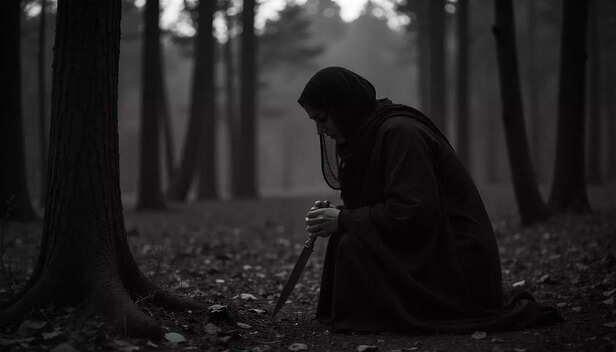From ‘Patni Hai Devi’ to ‘Patni Hai Qaatil’: The Shocking Rise of Marriage Crimes in India
Ayush Singh | Jul 14, 2025, 17:00 IST
Qatil patni
( Image credit : Freepik )
Once hailed as ‘devi’-symbols of patience and sacrifice-wives in India are now increasingly appearing in crime reports as accused in their husbands' murders. From small towns to metro cities, India is witnessing a shocking surge in wife-driven crimes, shaking long-held societal beliefs. This article delves into real-life cases, NCRB data, and expert opinions to uncover the psychological, social, and legal reasons behind this dark trend. It also explores the role of mental health, media narratives, and the need for early intervention in marriages to prevent such tragedies. Is this violence a crime-or a cry for help?
For generations, Indian culture has revered wives as embodiments of patience, sacrifice, and divinity—the ‘patni hai devi’ belief etched deep in collective consciousness. Bollywood romanticized the loyal, long-suffering wife. Television soaps painted her as the family’s emotional backbone. But in a chilling twist, recent crime reports suggest a disturbing shift: increasing cases of wives turning perpetrators of violent crimes, even against their own husbands.
From small towns to metropolitan cities, India is witnessing a spike in what many are now calling the “patni hai qaatil” phenomenon—a stark contrast to traditional imagery. The question many are asking: What’s driving this unsettling trend?

In 2025 alone, multiple headlines stunned the nation. A wife in Uttar Pradesh poisoned her husband over an alleged affair. In Maharashtra, a woman allegedly hired contract killers to eliminate her husband after constant domestic disputes. In Kerala, a wife dismembered her partner’s body after years of reported abuse.
Such cases, once rare and dismissed as outliers, are now appearing with disturbing frequency in police records and courtroom proceedings across India.
According to the National Crime Records Bureau (NCRB), between 2019 and 2024, there’s been a 30% rise in cases where wives were booked under charges of murder or attempted murder of their husbands. Legal experts note a parallel increase in cases under IPC Sections 302 and 307, directly involving female accused in spousal crimes.
Domestic violence, once discussed largely in the context of male aggressors, is now expanding into a two-way street—with women increasingly resorting to violence, either as retaliation or pre-emptive action.

Experts suggest there’s no single reason behind this transformation. Rather, it’s a complex web of psychological, social, and emotional factors. Some key reasons include:
Many cases reveal a long history of domestic violence or emotional abuse, pushing women towards a breaking point. For some, crime becomes an act of desperation—a tragic attempt at escape from years of entrapment.
“It’s important to understand that not all women are born criminals. Many become one after enduring prolonged abuse without support,” says Dr. Meera Rao, a psychologist based in Delhi.
Infidelity remains a recurring trigger. In several cases, women discovered their husbands’ affairs or second marriages. The emotional turmoil often spirals into acts of violence, sometimes meticulously planned.
In many Indian households, husbands control financial resources. Women with no income or financial independence feel trapped, with little recourse. Crimes emerge as drastic escape mechanisms.
4. Changing Gender Dynamics
With evolving societal norms, women are no longer silent sufferers. Increased access to education, social media awareness, and legal knowledge have empowered women—but sometimes, that empowerment takes a dark turn, especially when legal avenues fail them.
Another under-discussed factor is the state of mental health. Many accused women reportedly suffered from undiagnosed depression, anxiety, or even post-traumatic stress disorder (PTSD). Unfortunately, in India, mental health remains stigmatized, especially for women in traditional marriages.
“Instead of therapy, many women end up with silent trauma that festers into rage,” adds Dr. Rao.

The media’s portrayal of these crimes plays its own controversial role. Terms like ‘killer wife’ or ‘black widow’ sensationalize these cases, stripping them of context and complexity. Social media often mocks such women, labeling them as manipulative or cold-blooded murderers, ignoring years of potential suffering behind their actions.
Experts warn that this not only dehumanizes the accused but also deters meaningful conversations around marital conflicts and support systems.
While male victims deserve justice, it’s critical to question whether these men were always innocent. In several cases, police investigations uncovered years of physical assault, dowry harassment, and mental cruelty perpetrated by the husbands.
Unfortunately, the narrative of ‘patni bani qaatil’ overshadows these critical aspects, painting women solely as villains.

Under India’s current legal system, women enjoy certain protections under laws like the Protection of Women from Domestic Violence Act, 2005. However, there’s growing discourse on whether the system is adequately equipped to handle cases where women are the aggressors.
Legal analyst Praveen Kumar points out, “Our judicial lens still views women as victims first. When they’re accused, the system often swings between disbelief and excessive punishment, with little middle ground.”
In many cases, police officials themselves struggle with biases, often assuming the woman must be innocent unless overwhelming evidence proves otherwise.
Addressing this worrying trend requires more than arrests and courtroom battles. Experts propose a multi-pronged approach:
Marriage counseling should be normalized, especially in cases of early conflict. Government-supported family welfare schemes could provide subsidized counseling services in urban and rural areas.
2. Empowerment Without Violence
Women’s empowerment should not translate into radical acts of violence. NGOs and community organizations need to actively educate women on legal rights, support helplines, and peaceful exit strategies from abusive marriages.
Regular mental health check-ups, helpline accessibility, and destigmatization of therapy for both men and women could prevent crimes borne out of suppressed trauma.
Journalistic ethics demand that media houses move beyond sensational headlines and instead focus on systemic failures that push women towards crime.
A Mirror to Society
The shift from ‘patni hai devi’ to ‘patni hai qaatil’ is not just about changing crime statistics. It reflects deeper fractures within Indian marriages—of unaddressed abuse, silenced voices, and a failing support system.
While every husband killed by his wife is undeniably a victim of a heinous crime, many wives who commit these acts are victims too—of circumstances, emotional neglect, and systemic apathy.
Instead of branding women as ‘qaatil patni’ or glorifying the idea of the ‘ideal wife’, it’s time India introspects: Why are marriages breaking down so violently? What societal support structures are failing women to the point that murder seems like their only option?
Behind every headline, there’s a story the nation must not ignore.
From small towns to metropolitan cities, India is witnessing a spike in what many are now calling the “patni hai qaatil” phenomenon—a stark contrast to traditional imagery. The question many are asking: What’s driving this unsettling trend?
Shocking Cases Grabbing Headlines

marriage crimes
( Image credit : Freepik )
In 2025 alone, multiple headlines stunned the nation. A wife in Uttar Pradesh poisoned her husband over an alleged affair. In Maharashtra, a woman allegedly hired contract killers to eliminate her husband after constant domestic disputes. In Kerala, a wife dismembered her partner’s body after years of reported abuse.
Such cases, once rare and dismissed as outliers, are now appearing with disturbing frequency in police records and courtroom proceedings across India.
The Numbers Tell a Grim Tale
Domestic violence, once discussed largely in the context of male aggressors, is now expanding into a two-way street—with women increasingly resorting to violence, either as retaliation or pre-emptive action.
What’s Causing This Shift?

domestic abuse
( Image credit : Freepik )
Experts suggest there’s no single reason behind this transformation. Rather, it’s a complex web of psychological, social, and emotional factors. Some key reasons include:
1. Years of Suppressed Abuse
“It’s important to understand that not all women are born criminals. Many become one after enduring prolonged abuse without support,” says Dr. Meera Rao, a psychologist based in Delhi.
2. Infidelity and Betrayal
3. Financial Control and Dependence
4. Changing Gender Dynamics
The Role of Mental Health: A Silent Catalyst
“Instead of therapy, many women end up with silent trauma that festers into rage,” adds Dr. Rao.
Media Sensationalism: Adding Fuel to Fire?

NCRB crime report 2025
( Image credit : Freepik )
The media’s portrayal of these crimes plays its own controversial role. Terms like ‘killer wife’ or ‘black widow’ sensationalize these cases, stripping them of context and complexity. Social media often mocks such women, labeling them as manipulative or cold-blooded murderers, ignoring years of potential suffering behind their actions.
Experts warn that this not only dehumanizes the accused but also deters meaningful conversations around marital conflicts and support systems.
Are Husbands Always Innocent?
Unfortunately, the narrative of ‘patni bani qaatil’ overshadows these critical aspects, painting women solely as villains.
Legal Systems: Biased or Balanced?

Wife kills husband in India
( Image credit : Freepik )
Under India’s current legal system, women enjoy certain protections under laws like the Protection of Women from Domestic Violence Act, 2005. However, there’s growing discourse on whether the system is adequately equipped to handle cases where women are the aggressors.
Legal analyst Praveen Kumar points out, “Our judicial lens still views women as victims first. When they’re accused, the system often swings between disbelief and excessive punishment, with little middle ground.”
In many cases, police officials themselves struggle with biases, often assuming the woman must be innocent unless overwhelming evidence proves otherwise.
Solutions: Where Do We Go From Here?
1. Counseling at Early Stages
2. Empowerment Without Violence
3. Mental Health Awareness
4. Balanced Media Narratives
A Mirror to Society
While every husband killed by his wife is undeniably a victim of a heinous crime, many wives who commit these acts are victims too—of circumstances, emotional neglect, and systemic apathy.
Instead of branding women as ‘qaatil patni’ or glorifying the idea of the ‘ideal wife’, it’s time India introspects: Why are marriages breaking down so violently? What societal support structures are failing women to the point that murder seems like their only option?
Behind every headline, there’s a story the nation must not ignore.
